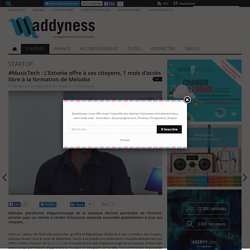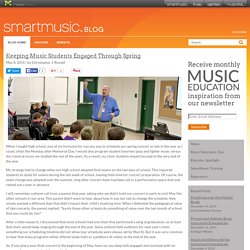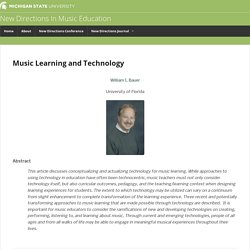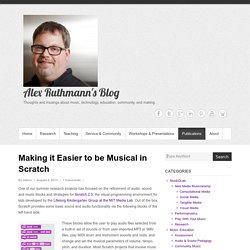

The Open, Interactive Music Theory Textbook. This Summer, Hybrid Pedagogy launched a new long-form publishing venture, spearheaded by Robin Wharton and Kris Shaffer: Hybrid Pedagogy Publishing (HPP).

Hybrid Pedagogy Publishing seeks to encourage active public discourse by publishing works that are born out of, or facilitate, community (inter)action—works that are crowdsourced or collaboratively authored, openly accessible, encourage remixing and republishing, and/or blur the lines between author and reader. HPP began with a call for participation in The Generative Literature Project. That call reached its goal of finding 10 faculty willing to join their writing classes with this collaborative, multi-institutional, creative writing project. HPP is now conducting a crowdfunding campaign to build an open-source, interactive music theory textbook that is easy for instructors to use, customize, and augment with their own resources. But we don’t just want to create one open textbook. [Photo n(n+1) by Jan Tik, licensed under CC BY 2.0] Créer des rythmes et des mélodies en toute liberté sur le Web. #Musique : L'Estonie offre un mois d'accès libre à la formation musicale de Meludia à ses citoyens.
Meludia, plateforme d’apprentissage de la musique devient partenaire de l’Estonie, premier pays au monde à rendre l’éducation musicale accessible gratuitement à tous ces citoyens.

C’est un cadeau de Noël très particulier qu’offre la République d’Estonie à ses 1,3 million de citoyens, puisque durant tout le mois de décembre, l’accès à la plateforme d’éducation musicale Meludia leur est offert. Créée à Paris en 2012, Meludia est une plateforme web d’apprentissage de la musique. Grâce à des exercices qui permettent d’apprendre la musique en éduquant son oreille, tout comme cela se passerait pour l’apprentissage d’une langue, Meludia s’adresse aussi bien aux débutants qu’aux musiciens avertis. « L’Estonie célèbre en 2015 l’Année de la Musique et ce partenariat avec Meludia est un des temps forts de l’année. Neurosciences Sensorielles Comportement Cognition - Test Auditif. Technology in Music Education. Blog - Page 7 of 48 - SmartMusic. In February the Recording Academy and Grammy Foundation selected one music educator – from a pool of more than 7,000 nominees – for their 2015 Music Educator Award: Jared Cassedy, the director of bands at Windham High School in Windham, New Hampshire.

This was the latest of several accolades paid to Jared, who was named “Outstanding Young Band Director of the Year” by the New Hampshire Band Director’s Association in 2011, and was nominated for New Hampshire Teacher of the Year in 2014. Under his leadership the WHS Concert band has enjoyed remarkable success: Clearly directing such a high-performing ensemble necessitates an extremely busy schedule, so I’m very appreciative of the time Jared generously shared with our blog: What inspired you to become a music educator?
Was a particularly influential teacher or mentor part of this decision? I think what inspired me to be a teacher was my family. When I got to high school my band director was extremely influential in my journey. Music Learning and Technology - New Directions In Music EducationNew Directions In Music Education. William I.

Bauer University of Florida Abstract This article discusses conceptualizing and actualizing technology for music learning. While approaches to using technology in education have often been technocentric, music teachers must not only consider technology itself, but also curricular outcomes, pedagogy, and the teaching/learning context when designing learning experiences for students. Music educators need to be proficient and knowledgeable concerning technological changes and advancements and be prepared to use all appropriate tools in advancing music study while recognizing the importance of people coming together to make and share music [1]. Historically, music education in the United States has been consistently linked to and influenced by the country’s sociological and cultural trends, as well as general educational policies and initiatives. Musicians too have embraced modern technologies.
FIGURE 1. An Introduction to TPACK Developing and Refining Musical TPACK Table 1 Note. U. Créer des rythmes et des mélodies en toute liberté sur le Web. Lowering the Barriers to Creative Musical Expression. CRÉATIONS MUSICALES EN LIGNE. Computer music. Alex Ruthmann (@alexruthmann) Making it Easier to be Musical in Scratch. One of our summer research projects has focused on the refinement of audio, sound and music blocks and strategies for Scratch 2.0, the visual programming environment for kids developed by the Lifelong Kindergarten Group at the MIT Media Lab.

Out of the box, Scratch provides some basic sound and audio functionality via the following blocks of the left hand side: These blocks allow the user to play audio files selected from a built-in set of sounds or from user-imported MP3 or WAV files, play MIDI drum and instrument sounds and rests, and change and set the musical parameters of volume, tempo, pitch, and duration.
Most Scratch projects that involve music utilize the “play sound” blocks for triggering sound effects or playing MP3s in the background of interactive animation or game projects. This makes a lot of sense. Users have sound effects and music files that have meaning to them, and these blocks make it easy to insert them into their projects where they want. Ludovico Einaudi "Nuvole Bianche" Sheet Music (Piano Solo) - Download & Print. Flowkey. Queen's University Belfast.